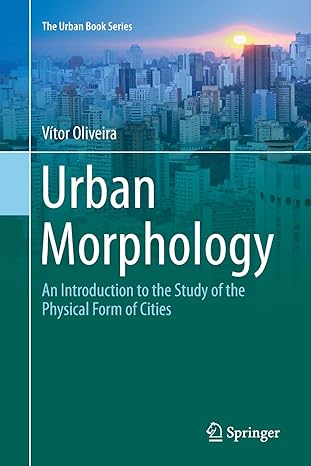Exercise 6.3Axial Map The main goal of this exercise is to expose the student to the Depthmap
Question:
Exercise 6.3—Axial Map The main goal of this exercise is to expose the student to the Depthmap software used by the Space Syntax community (open access, available at https://varoudis.git hub.io/depthmapX/), and to perform a simple task, the design of an axial map and the calculation of some simple measures.
First, the student should define the case study area, through a circle around his home (suggested radius: 1.000m—it can, then, progress into a larger radius). Then, the student should design the axial lines, using a computer-aided design software
(such as Autocad). The basis for this step should be the map of streets of the case study area. Starting from any given point of the study area, the student should design the visibility/movement lines of all streets, in a way that the whole system is covered by the least set of lines. All lines should be connected (a slight overlap of the end of each pair of lines is recommended) and the map should be saved in .dxf format.
Moving from Autocad into Depthmap, the next step is importing and converting the map into an axial map:
Map—Import Map—Convert drawing map—Axial map The produced axial map has two measures—connectivity and line length.
The following step is the calculation of global integration (radius n) and choice, and then, of local integration (radius 3, as one of the most used radii in space syntax).
Tools—Axial/convex/pesh—Run graph analysis—Axial analysis options: radius n, include choice Tools—Axial/convex/pesh—Run graph analysis—Axial analysis options: radius 3
Finally, the maps should be extracted:
Edit—Export screen Formore details see the space syntax online platform at https://www.spacesyntax.
online/.
Each student should prepare a brief powerpoint to be presented in classes (around 10 minutes for each presentation). The student should use text and images (drawings and photographs), or any means that he thinks it is adequate.
Step by Step Answer:

Urban Morphology An Introduction To The Study Of The Physical Form Of Cities
ISBN: 287081
2nd Edition
Authors: Vitor Oliveira





